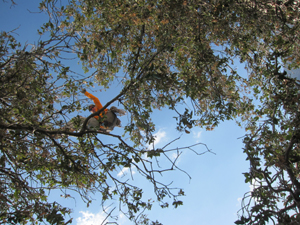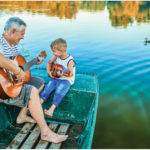
Editor’s note: Climber Tin Ilakovac provides this account of his accident and rescue last week. Lee Arnson’s narrative of the rescue can be found here.
Last Saturday, April 27, around 1:30 p.m. I fell on Tahquitz Rock above Idyllwild in Southern California, on a route called Fingergrip, the 5.8 slab/dihedral pitch above the “Jungle Ledge,” a very easy climb for me. I was a hand’s reach from the bolted anchor when I slipped. I was injured in the fall and quite helpless after it. I had to be rescued.
This was my first climbing injury. I’ve been a climber since the high school days in the late 70s. I climbed around the world alpine, trad and sport, at all elevations on rock, ice and snow. My pastime used to be soloing 300-meter faces in the 5.9-10 range.
As if my past was my warranty, as if I were entitled to safety, I optimized my climbing to that, to “it won’t happen to me.” I wasn’t there 100 percent on Fingergrip. I didn’t visualize a few moves ahead. I didn’t check how I executed them. This is how the fall felt ...
My left foot slipped, not a problem. Then, with increasing interest, I looked at my hands as they pulled from the rock, too. I was suspended and surprised in the thin air like a cartoon character for that one moment and it felt like this is how it’s going to stay. Plenty of time to ask myself how many times have I corrected an imperfect move just a bit, without a glitch. I thought this part of my character.
Then the slow motion kicked in: I gradually peeled off, lost contact with the rock and took the rope to keep it up. I looked down the slab to see the path I was to pass inevitably. Checked the last protection. The orange Alien was well wedged in the crack below me — 30 feet below me.

For I had decided to runout a 5.8 and take a risk of a 60-70 foot fall, not a matter of great concern or even choice in many harder climbs, but this time — Was I lazy? Cocky? Feeling invincible? I remembered talking to myself during the last 30 feet: don’t fiddle with the nuts, your smallest cam is not small enough, it’s easy enough and you’re almost there.
What bothered me now was the lack of a safe plan for this long, nonvertical slab fall. I hate doing things without a plan.
No whistle of wind picked up with speed, no hit, no nothing. I just woke up in terrible pain hanging by a screaming rib-cage a few feet above the belay stand. Kathryn, Ilakovac’s wife, remembers me moaning like an animal. I remember begging her to be lowered to the ledge to relieve the suffering.
Half an hour passed at the margins of consciousness, hours shaking in shock. Kathryn hovered over me, profoundly soothing and calm. Lei too, a solo climber who came to help and called the rescuers. Time and pain were one and the same. The sky was a blue lid over it.
Then two shadows lowered from this lid, from a big bird cutting its blades into the cliff. One said, “I’m Les, he’s Lee.” They strapped me carefully into a gurney, and with inhuman effort got me into a position to be hauled up to the bird. Kathryn operated the GriGri. I was utterly helpless. Full of gratitude. Thank you Les and Lee, thank you Kathryn and Lei, thank you pilot and copilot.
I was rushed into the Riverside hospital where they suspected broken hip, ribs, fingers, neck and brain hemorrhage. Quite a list, so they kept me. The kind hospital personnel dismissed one suspicion after the other, until on Sunday afternoon I was cleared to go home. The fall truly spared me — I was just bruised like hell.
We’ll never know what happened in those 2-3 seconds it took me to fall. I was knocked out, Kathryn was breaking the fall and watching the rope. It seems plausible that the rope tightened and pulled me backwards into the dihedral where I hit my right side and my head.
Lessons learned?
I felt entitled to climb this climb with ease. This was based on things I climbed in the past. Yet I was supposed to earn it. We earn each climb, again and again. The climbs go through their subtle changes, get dirty, wet, holds get loose and break, and I’m certainly not the same from day to day.
I should have been focused, and if not, be frank about it. Take a rest, take a whole day.
Climbing takes constant optimization. (Body positions, power output, rest, protection placement, time, weather assessment, steering clear of falling rock, snow, ice, positions of the belay stations and overnight camps, things you carry, etc.)
What was I optimizing for when I placed no gear for 30 feet? I was sure I wouldn’t fall. Hubris, invincibility, I chose to optimize for that, rather than safety.
Now it will be interesting to see how will I deal with and optimize all the runouts where the first ascenders left potentials for truly long falls.
Thank you for all your good thoughts. Happy climbing! And obligatory: Climb safe.










